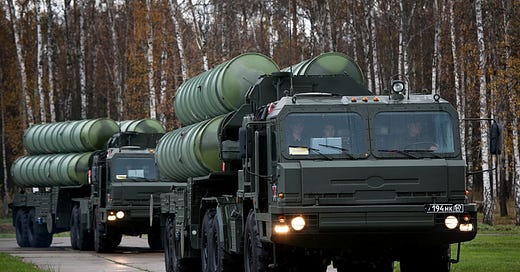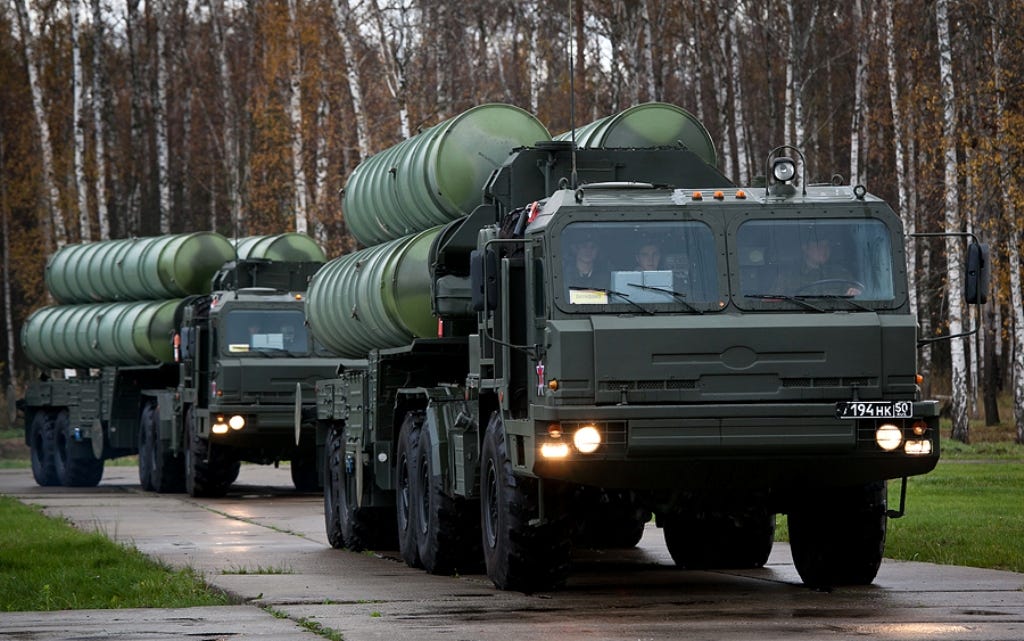I am more convinced than ever that the US could NOT establish air superiority against Russia — not in a week; not in a year. Never. It simply could not be done. It would be a logistical power projection challenge well beyond the current capabilities of the United States military.
American air power would prove substantially inferior to the extremely potent and abundantly supplied air defenses fielded by the Russians.
Just as the majority of HIMARS-launched GMLRS rockets, HARMS missiles, ATACMS missiles, and British Storm Shadow missiles are now being shot down in Ukraine, the vast majority of US long-range precision-guided missiles would be shot down, and the US would very rapidly deplete its limited inventory of these munitions in a futile attempt to overwhelm the Russian capacity to keep shooting back.
American suppression of enemy air defenses would prove inadequate to the task of defeating extremely sophisticated, deeply layered, and highly mobile air defense radars and missiles.
American “stealth” capabilities would prove to be illusory. A great many military experts around the world already know this to be true. You simply cannot fly tons of airframe, miles of wiring, and hot jet engines in the sky and not be tracked and targeted by Russia’s best-in-class systems.
And in the likely rare instances of beyond-visual-range “dog fights” between US and Russian aircraft, US air-to-air missiles would be consistently outranged by their Russian counterparts.
If they were to fly into air defense coverage areas, American and other western aircraft would be shot down in droves.
Worse yet, the war in Ukraine has made perfectly clear that all manner of western air defense systems are inferior to even the decades-old Soviet S-300 and Buk systems that Ukraine originally deployed. And even if western systems were formidable, they simply don’t exist in anything approaching the numbers necessary to provide credible defense in broad scope and depth.
To complicate matters even further, scant US munitions inventory and insuperable production limitations would allow the US to prosecute an air war against Russia or China for only a few weeks at most.
Moreover, in a high-intensity combat scenario in either eastern Europe, the China seas, or the Persian Gulf, the maintenance demands for US aircraft would overwhelm its proximate supply. Mission-capable rates would plummet even lower than their notoriously abysmal peacetime standards.
The US would, quite literally after only a few days, see sub-10% mission-capable rates for the F-22 and F-35, and sub-25% rates for almost every other platform in the inventory.
It would be a huge embarrassment for the Pentagon ... but hardly a huge surprise.
And this is hardly hyperbole. It is more or less common knowledge among those who think about these aspects of war — the only aspects that really matter in the final analysis.
US supply lines would be severely attrited on both a regional and a global scale.
Russian and Chinese submarines and long-range anti-ship missile systems would wreak havoc on US seaborne logistics.
Simply put, US air power as a theater-wide undertaking could not be sustained in the context of a non-permissive regional and global battlefield against one or more peer adversaries.
In eastern Europe, Russia would savage NATO bases and supply routes. The Baltic and Black seas would effectively become Russian lakes where NATO shipping could not venture.
In the China seas, US carrier strike groups and amphibious assault formations would be subject to massive and relentless attacks from the air and the sea.
Against Iran, the Persian Gulf would become an Iranian pond in which Iran controlled both ingress and egress via the Strait of Hormuz, even as Iranian missile strikes devastated US bases throughout the region.
Many are convinced these are unfounded hysterical assertions. In my view, the simple military, mathematical, and geographic realities of the situation dictate these conclusions, and those who resist them are typically blinded by the myth of American exceptionalism and its attendant ills to such a degree that they are unable to discern things as they really are.
There has also been relatively little recognition nor discussion of the crescendo pace with which Russia, China, and Iran have been conducting military coordination in general, and naval drills in particular, over the past few years.
Russia and China are now engaging in joint naval patrols of the western Pacific, and even along the coast of Alaska.
Russia, China, and Iran are engaging in regular joint exercises in the Arabian Sea.
This is not meaningless posturing. These are the actions of countries who intend to engage in mutual defense in the event of an attack on any one of them.
I am increasingly persuaded that, if the US chooses to make direct war against either Russia, China, or Iran, it will result in a war against all three simultaneously.
And that, amazingly enough, is just one of multiple hard truths that the #EmpireAtAllCosts cult, and those acquiescing to its delusional designs, ought to give more serious consideration as they continue staggering towards the abyss of a war they could never win.
(Originally published July 28, 2023; updated January 23, 2024)
FYI: Over the life of this blog, a few generous people have pledged some money to support it. But I have never required a paid subscription to read my stuff. And I still won’t. However, I have now “enabled” subscriptions purely as a means by which, if people are so inclined, they may support me with whatever amount they so choose. I also include a “Tip Jar” link in every post, if you’d like to go that route. But you don’t have to if you don’t want to. It’s purely voluntary. Everyone will still be able to read everything I write.
For all of you who have previously pledged to support this blog, I express my genuine gratitude. I hope my writing has been informative in some small manner and aided you in your quest to understand our crazy world a little better.
— Will Schryver




